Hunters hunt, and very few hunt only one species. Surely everyone has his or her favorite game animal to pursue, and the way seasons are stacked across most of the country creates ample opportunities to spend multiple weeks or months planning, plotting, and pulling triggers. This is why we compiled the following list of top states for hunting multiple species.
What Do Hunters Hunt?
In September 2023, the U.S. Fish & Wildlife Service released its 2022 National Survey of Fishing, Hunting, and Wildlife-Associated Recreation report, which gives us one of the best high-level glimpses of what hunters hunt, what fisherpeople fish, and how wildlife-centered recreationists recreate. This survey has been conducted since 1955 and is one of the oldest and most comprehensive continuing recreation surveys. The 2022 version replaces the 2016 version.
It’s in these pages that we see that deer hunting is (by far) the most popular type of hunting, with 11.5 million hunters dedicated to finding big game (including wild turkey). Small game (rabbits, squirrels, pheasants, quail, and grouse) is second with 5.3 million hunters, and third place is solidified by migratory bird hunters with 2.8 million wingshooters.
From this data, we can infer that a large number of people probably hunt deer and…something else. This is backed by the fact that all 50 U.S. states have at least one huntable type of deer, and nearly all have whitetails (Alaska has very few; Hawaii has none), so that particular ungulate can support the millions of hunters the survey describes.
But the intent here is not to list off a bunch of states where one can go after “deer and…,” except for one or two notable exceptions. Instead, we want to consider more nuanced hunting experiences, more generous tag limits, and a wider diversity of animals. With that, here are the eight states worth your consideration.
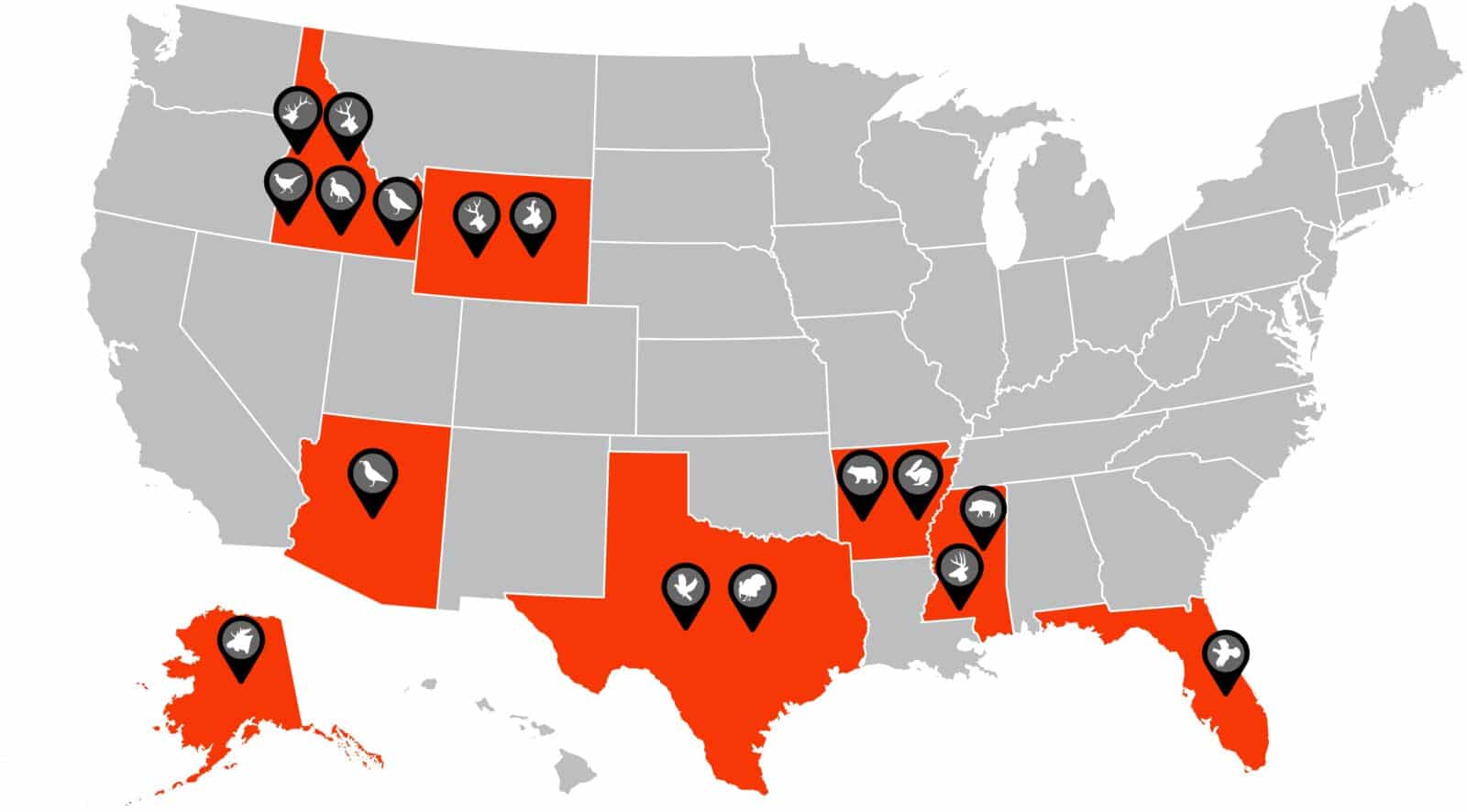
Best State for Really Big Game: Alaska
It’s already been noted that Alaska lacks whitetail deer, but it also lacks wild turkey. However, few states have the abundance, diversity, and magnitude of quality game animals that Alaska offers. For this reason, it very much deserves a mention.
Alaska has a reputation built around its apex predators, but it’s the ungulates we want to highlight here. Moose and caribou are among the largest game animals in North America, and both are huntable in Alaska, both through do-it-yourself and guided hunts.
The Alaska Yukon Moose weighs just over 1,800 pounds and is the second-largest animal on the continent. At least 7,000 of Alaska’s 175,000-200,000 moose are taken annually, with 7,289 harvested in 2022. The season varies depending on region, but it is generally between September and the end of November, and the non-resident tag for moose is around $800. You still have to factor in other licenses and travel costs. Undoubtedly, this is an expensive animal to hunt, even more so if you want to book a guided hunt ($20,000-plus). But if you’re in Alaska hunting for moose you can feasibly look at more than just moose.
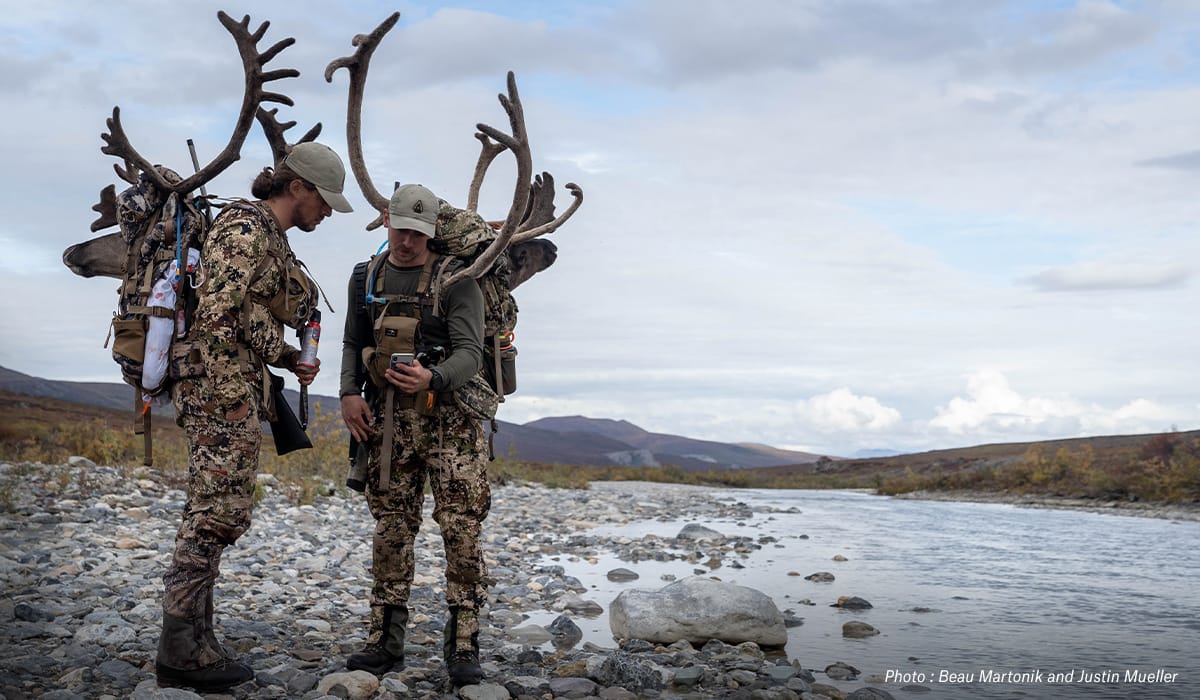
Hunting caribou in Alaska is a little more forgiving. Annually, about 22,000 caribou are harvested in the state that holds a population of nearly 1 million caribou, which are dispersed among 32 distinct herds. A non-resident license for caribou is a little less expensive than moose, coming in at $650, plus a $160 annual hunting license fee. Caribou hunting season is also longer, running between early August and the end of December.
Take a closer look at Alaska:
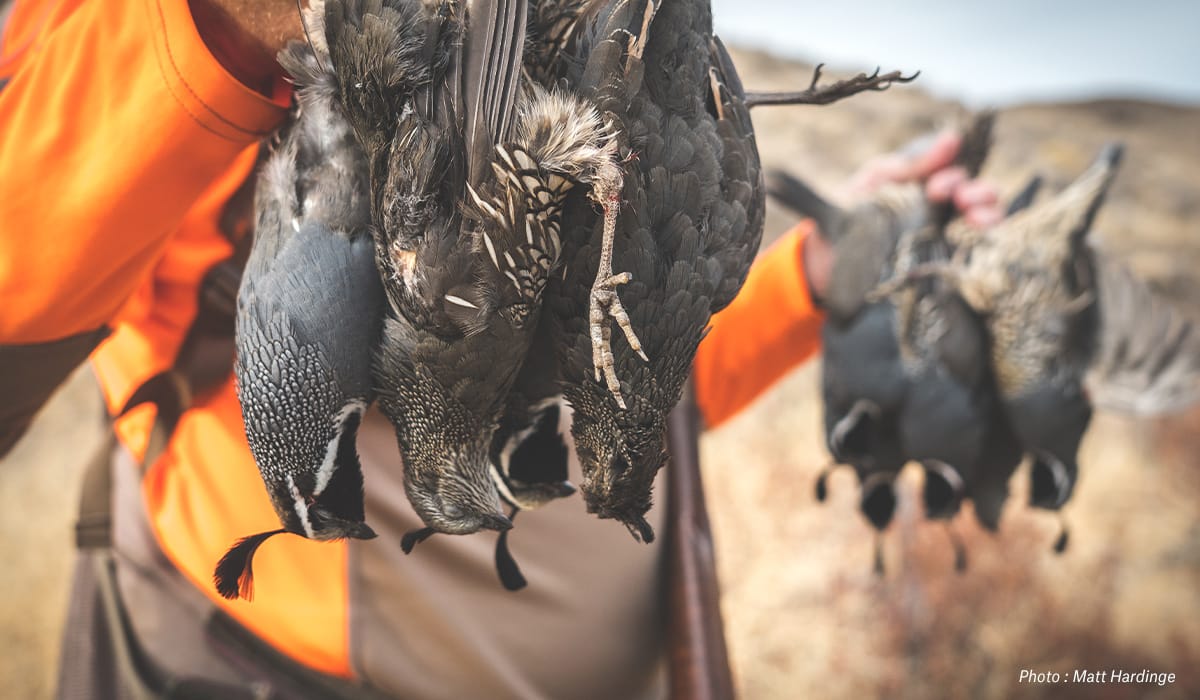
Best State for the Quail Trifecta: Arizona
There’s only one state in the U.S. where you can hunt the quail trifecta, and that’s Arizona. The trifecta includes three species of quail: Gambel’s, scaled, and Mearns. Sure, here we are talking about a single animal, but getting the chance to bag all three of these quail subspecies in a single weekend is a bucket list trip for a lot of upland hunters.
Gambel’s is known as the common, low desert quail most often found in brush and thickets. Their call is a repeating, “Chicago, Chicago, Chicago.”
Scaled quail live in higher, semi-desert grasslands among sparse brush and cacti. A white feathered top has earned them the nickname “cotton-top.” They are known to run more than fly.
The prized quail, however, is the Mearns, aka. the Montezuma, Harlequin, or fool quail because of its colorful plumage and likely because of the bird’s ability to humble the hunter who pursues it. Mearns aren’t known to run; they crouch. They live in the southeastern Arizona mountains where oak trees begin to grow.
Take a closer look at Arizona:
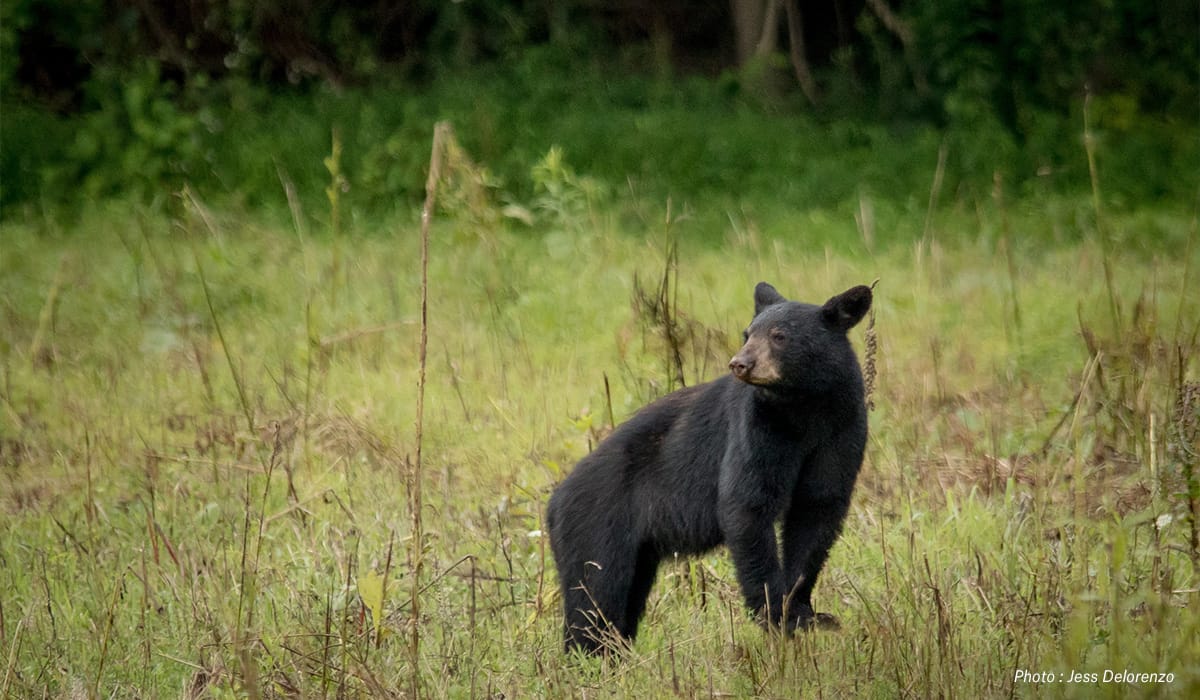
Arkansas: Best State for Black Bears and Bunnies
Honestly, Arkansas is a “best state” for much more than rabbit hunting and black bears. It has earned a spot on our “Best Waterfowl Hunting States” list, too, but the fact that hunters can find elk, alligator, feral hogs, bobcat, and myriad other game makes this state stand out in a hunter’s world.
Arkansas is a standout state for black bears, thanks, in part, to the notoriety that 7th-generation Arkansan Clay Newcomb has brought it. As the host of the “Bear Grease” podcast and founder/editor of “Bear Hunting Magazine,” Newcomb touts the particular joys of getting after bruins.
But bear hunting in Arkansas needs no embellishment. According to 2022 harvest data, hunters had slightly lower success rate taking bears since its peak in 2020, tagging and checking in 469 bears, but these numbers have been pretty stable since 2001.
On the other end of the food chain, rabbit hunting is a revered pastime in the state. With its six-month season and generous bag limits (8 daily with 16 in possession), it’s easy to pick up a .22 caliber gun and get hungry for rabbit stew.
This pair of quarry would also make for a fine parent/child hunting trip. A lot of youth hunters get their start by chasing cottontails around with small guns, and for the parent, sharing a big hunt with family is a time-tested way to bond.
Take a closer look at Arkansas:
Mississippi: Best State for Deer and Hogs
We meant not to focus on those “deer and…” states, but this one is too good not to mention, and the reasons are because of how well hunting this pair of animals has been documented by avid hunters and the fact that you can find both deer and hogs easily on public land. In fact, onX Ambassadors, The Hunting Public, released a video of just such a hunt in 2020. You can watch it below:
Wild hogs are classified as nuisance animals in Mississippi, and there’s no designated season for wild hogs in national forests in the state. You could almost say it’s open season on feral hogs, though hunters must obey weapons regulations and possess certain valid hunting licenses.
Deer hunting in Mississippi doesn’t take a backseat to hog hunting, though. The state hosts a healthy population of 1.75 million deer, and hunters average an annual harvest of 270,000+ whitetails.
So if you’re in for a primal pair of animals to hunt with bow or firearm, don’t miss Mississippi.
Take a closer look at Mississippi:
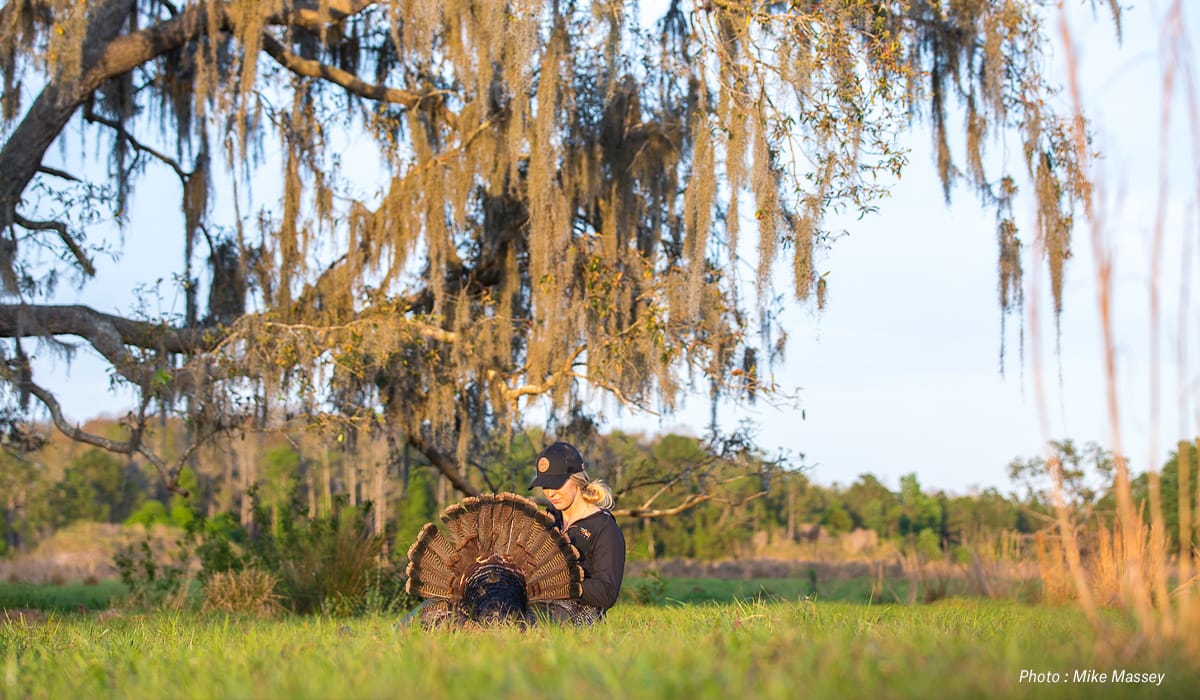
Best State for Two Birds: Texas
Texas is the place to take two very different kinds of birds. One of these birds is plump, rarely flies, and is the second-most popular game animal to pursue in America. We’re talking about the wild turkey. The other is small, fast, and arguably as tasty as turkey. It’s the sleek dove that brings shotguns to rise above the horizon for two long seasons. Here we have it, the yin and yang of wingshooting in the Lone Star State.
In some years, Texas has the biggest population of turkeys in the country, and that productive population consists of three subspecies: the Rio Grande, Eastern, and Merriam’s. Texas also lets hunters take up to four birds in a season (only one Eastern, however), and a good mix of public and private land opportunities is what sets Texas apart from other good turkey states.
The season-opener—correction, the two season-openers—of dove season in Texas are likened to national holidays. It’s a big deal. Texas runs two dove seasons, one from September to mid-November and another from mid-December to early January. It also has four species of doves to wingshoot: white-winged, mourning, white-tipped, and Eurasian collared doves. You’ll also have access to Rock doves, also known as (common) Rock Pigeons, for which there is no closed season or bag limits.
Take a closer look at Texas:
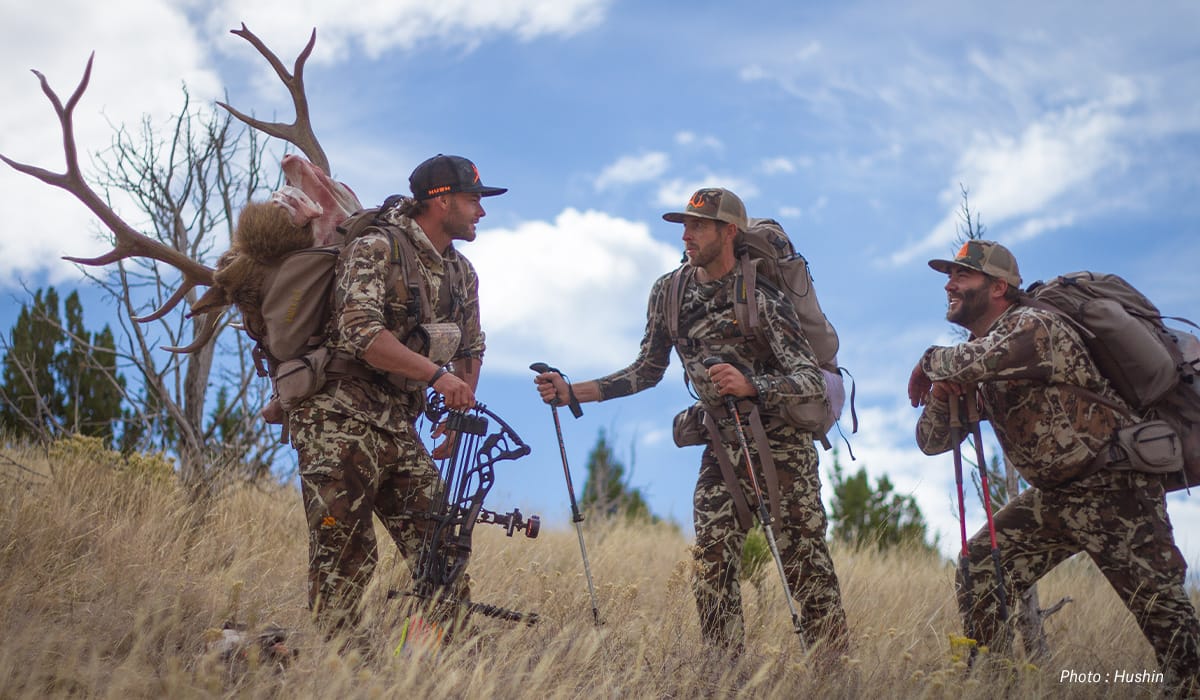
Best State To Hunt Just About Anything: Idaho
Idaho is a blessed state for hunting. From big game to upland bird hunting, you could spend a lifetime living off the bounty of its wildlife.
For the big game side, Idaho has elk, about 120,000 of them. Tags for elk hunting are distributed through a mix of drawings and over-the-counter options. According to Huntin’ Fool, the 2022 elk harvest marked the ninth straight year that more than 20,000 elk were harvested in a single season.
On the smaller side, the upland bird hunting opportunities in the Gem State are priceless. In fact, it’s the only state where one can potentially (with a lot of luck) bag six different types of upland bird species in a day: gray and chukar partridge, ruffed and dusky grouse, ring-necked pheasant, and valley quail.
Take a closer look at Idaho:
Best State for Unique Species: Florida
The Sunshine State’s temperate, tropical, and subtropical climates make it hospitable for more than vacationers and retirees. Florida is home to 700 different species of freshwater and land vertebrates, making it among the most biologically rich states in the U.S.
Among the native species that call Florida home are huntable populations of alligators and snipe. Both of these animals need fresh water, and freshwater and salt marshes, three things that cover much of Florida. Moreover, the seasons for these two species are lined up one after another.
Alligator hunting season opens in mid-August and runs until November 1, but it does require a limited-entry permit. Only about 7,000 permits are issued to a pool of over 15,000 applicants.
No joke, snipe hunting in Florida is an equal blend of upland hunting and waterfowling. These small, palm-sized birds overwinter here and love floodplains. Many good spots are accessible only by boat, but not all of them. Snipe are one of the most widespread shorebirds in the Western Hemisphere, and that allows hunters an eight-bird daily bag limit from November 1 to mid-February. Part of the thrill of snipe hunting is due to the erratic flying behavior these birds exhibit.
Take a closer look at Florida:
Best State for Pronghorn and Mule Deer: Wyoming
Wyoming is expansive. It’s wild. It’s a special place where hunters can chase special animals. Both pronghorn and mule deer are prolific in the Cowboy State.
Mule deer are emblematic of the American West. They are appreciated and studied by hunters and scientists alike. In fact, onX Hunt recently published an article and video of the work one researcher is doing to monitor mule deer migration and fawn recruitment in Wyoming’s Red Desert. You can watch that video here:
As noted in the video above, the state’s mule deer population has dropped by 31% over the last three decades, but they remain Wyoming’s most abundant and most sought-after deer, with a population of about 396,000.
The other iconic ungulate of the American West is pronghorn antelope. These “speed goats” are as fun to hunt as they are hard to hunt. There is an almost equal number of antelope in Wyoming as there are mule deer, sitting at a population of 388,500. In fact, there are more antelope in Wyoming than all of the rest of the continent.
Roughly 70,000 antelope are harvested in the state each year*, producing $4 million in license revenues and adding $24 million to Wyoming’s economy. And given that the average hunter success rate is 85% for antelope, the odds are ever in your favor for a good hunt.
If you want to hone your spot-and-stalk skills on a couple of savvy game animals, a few hunts in Wyoming will not disappoint.
Take a closer look at Wyoming:
*With a harsh 2022 winter, the WYGF had to cut about 10,000 antelope tags statewide for the 2023 hunting season.